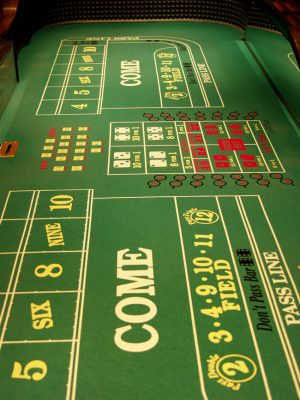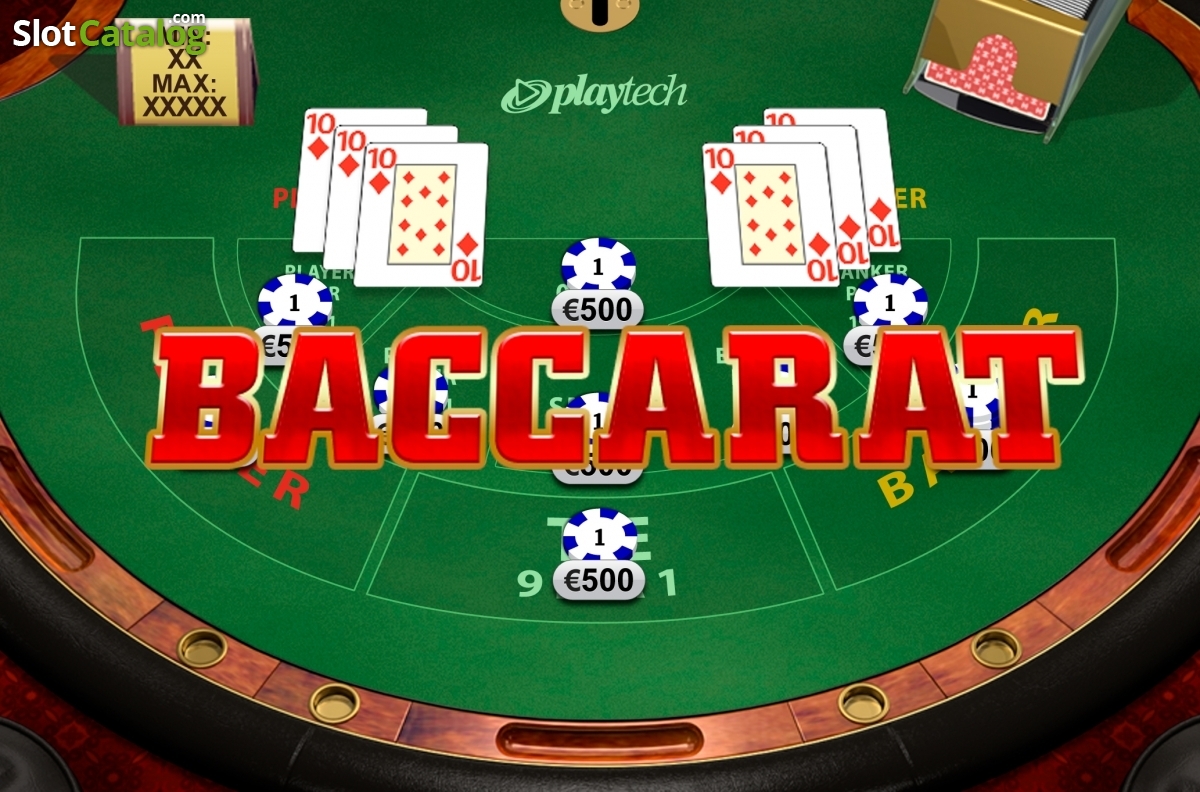Arguably, bridge is the greatest card game ever. It not only is a lifelong friend, it also enables you to make lifelong friends because it's a partnership game. From the four phases of playing a bridge hand to some expert advice on bidding, this Cheat Sheet helps you get started with playing bridge and then refine your game to increase your chances of winning.
Baccarat (pronounced BAH-kah-rah) is a card game that's especially popular with Asian players. James Bond also played it in one of the movies. The house edge is a mere 1.06%, making it one of the best bets in the casino. It's also one of the simplest card games around, because there's not really any strategy. A lot of sites tend to overlook baccarat bonuses, but we know there is a strong and dedicated following that love the game, and we set out to form the following table for the best baccarat bonuses. Baccarat You may be intimidated by baccarat with its glitz, glamour, and European aura, but behind the stiff exterior lies a decent game for the average bettor because there are only three possible results of each hand and there's no skill involved — it's strictly the fall of the cards. A couple tips for doing well. Baccarat rules for dummies. Badoo free credits 2013 hackzip. Besplatno upoznavanje preko interneta bez registracije pdf. Best free gay dating apps 2017. Mini Baccarat Conversely is normally played on the leading casino ground, As well as in work to maintain factors relocating, and have a lot more arms out for each hour, the playing cards are just dealt face up.The only online baccarat method For brand spanking new baccarat players is to.
The Four Phases of a Bridge Hand
Each hand of bridge is divided into four phases, which always occur in the same order: dealing, bidding for tricks, playing the hand, and scoring.
Dealing
Someone (anyone) shuffles the deck, and then each player takes one card and places it face-up on the table. The player with the highest card is the dealer. He shuffles the cards and hands them to the player to his right, who cuts them and returns them to the dealer. European roulette strategy. The cards are dealt one at a time, starting with the player to the dealer's left and moving in a clockwise rotation until each player has 13 cards.
Bidding for tricks
In this phase, players bid for the number of tricks they think they can take. (It's like being at an auction.) Because each player has 13 cards, 13 tricks must be fought over and won in each hand. The bidding starts with the dealer and moves to his left in a clockwise rotation. Each player gets a chance to bid, and a player can either bid or pass when it's his turn. The least you can bid is for seven tricks, and the maximum you can bid is for all 13. https://ytln.over-blog.com/2021/02/snapchat-login-pc-download.html. The bidding goes around and around the table, with each player either bidding or passing until three players in a row say 'Pass' after some bid has been made.
Playing the hand
The player who buys the contract, determined by the bidding, is called the declarer. The declarer is the one who will play the hand. The player seated to the left of the declarer puts down the first card face up in the middle of the table; this is the opening lead. The play moves clockwise. The next player, the dummy, places her cards face-up on the table in four vertical rows, one row for each suit, and completely bows out of the action. In other words, only three people are playing.
Once the lead is on the table, the declarer plays any card from dummy in the suit that was led; third hand does the same, and fourth hand, the declarer, also does the same. Whoever has played the highest card in the suit wins the trick and leads any card in any suit desired to the next trick. The same process goes on for all 13 tricks. The rule is you have to follow suit if you have a card in the suit that has been led. If you don't have a card in that suit, you can throw away (discard) any card you wish from another suit, usually some worthless card. After 13 tricks have been played, each team counts up the number of tricks it has won.
Scoring
After the smoke clears and the tricks are counted, you know soon enough whether the declarer's team made its contract by taking at least the number of tricks they bid. You then register the score. The deal moves in a clockwise manner; the player to the left of the person who has dealt the previous hand deals the next one.
Bidding Tips for Winning Bridge Games

In bridge, bidding is considered the most important aspect of the game. It's a given that a good bidder equals a winning bridge player. Here are a few bidding tips to start you off: https://angelsoft.mystrikingly.com/blog/inotepad-pro-2-5-download-free.

In bridge, bidding is considered the most important aspect of the game. It's a given that a good bidder equals a winning bridge player. Here are a few bidding tips to start you off: https://angelsoft.mystrikingly.com/blog/inotepad-pro-2-5-download-free.
Before opening, add your high card points (HCP): Ace = 4, King = 3, Queen = 2, Jack = 1. With 12 or more HCP, open the bidding.
To open 1♥ or 1♠, you need at least five cards in the suit.
With two five-card suits, open in the higher-ranking suit first. The rank of the suits, from highest to lowest, is spades, hearts, diamonds, clubs.
With two four-card suits, one a major (hearts or spades), one a minor (diamonds or clubs), open in the minor. With two four-card minors, open 1♦.
Open 1NT with 15 to 17 HCP plus a balanced hand (no voids, singletons, or two doubletons).
If your partner opens, pass with fewer than 6 HCP. With 6 or more HCP, bid your longest suit at the one level, if possible. Responding at the two level in a new suit requires 11 or more HCP. A response of 1NT shows 6 to 10 HCP and denies a four-card major if your partner opens 1♣ or 1♦.
Supporting your partner's first bid major suit requires three or more cards in the suit; supporting any second bid suit requires four or more cards in the suit.
A primary objective in bidding is to locate an eight-card or longer major suit fit between your hand and your partner's.
Bridge Etiquette: Bidding Do's and Don'ts
In bridge, bidding is an exchange of information. During bidding, you're trying to telegraph details about your cards to your partner. Your first impulse may be to develop some special bidding conventions that only you and your partner know. According to the rules of the game, however, you can't have any bidding secrets with your partner; the same goes for your opponents. So even though the opponents may be bidding their heads off, you at least will know what their bids mean.
Here are some tips to help you keep your bidding on the straight and narrow:
Do try to use the minimum number of words possible when you bid. If you want to pass, say just one word: 'Pass.' If you want to bid 3♣, say 'Three clubs.' No more, no less.
Do be careful about how you use your voice. You may be tempted to bid softly if you have a weak hand or loudly if you have a strong one. Remember to keep all your bids at the same decibel level.
Don't use body language. If your partner makes a bid you don't like, don't throw any looks across the table and don't use any negative body language. If your partner makes a bid that you do like, you also must refrain from any telltale signs of glee.
Don't give in to emotional reactions or breakdowns, no matter what happens during the bidding. Bridge is too great a game to mess it up with illegal signals, so keep an even keel.
Points Scored by Making Your Contract in Bridge
Blackjack For Dummies Book
This handy table for bridge players shows how many points you score if you make your contract. Your bridge score depends upon which suit you end up in (including notrump) and how many tricks you take. For example, if spades are trumps and you bid for 8 tricks and you take exactly 8 tricks, read across the spade line to see that you scored 60 points. If you don't make your contract, you don't have to worry about this table because you don't score any points, the opponents do!
Blackjack For Dummies
Note: Game = 100 points. There are bonuses for bidding and for making 100 points or more on one hand.
| Tricks Taken | 7 | 8 | 9 | 10 | 11 | 12 | 13 |
|---|---|---|---|---|---|---|---|
| Notrump | 40 | 70 | 100 | 130 | 160 | 190 | 220 |
| Spades | 30 | 60 | 90 | 120 | 150 | 180 | 210 |
| Hearts | 30 | 60 | 90 | 120 | 150 | 180 | 210 |
| Diamonds | 20 | 40 | 60 | 80 | 100 | 120 | 140 |
| Clubs | 20 | 40 | 60 | 80 | 100 | 120 | 140 |

